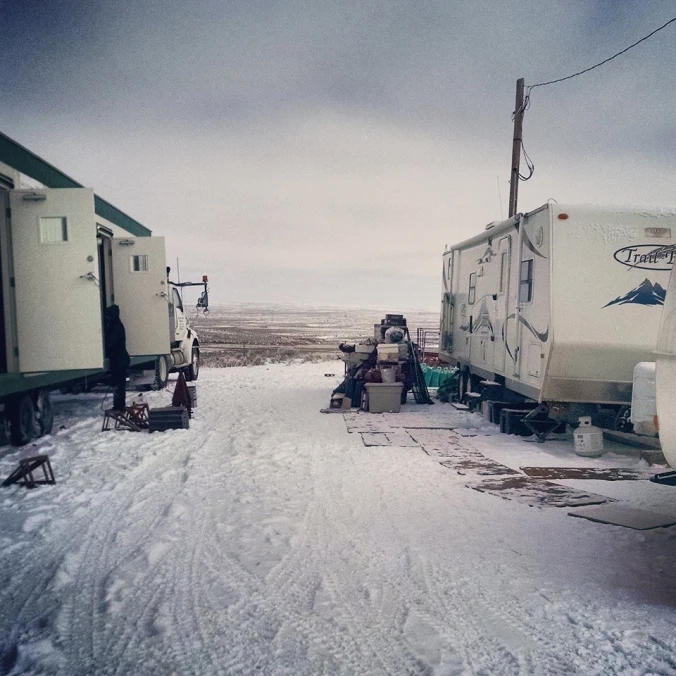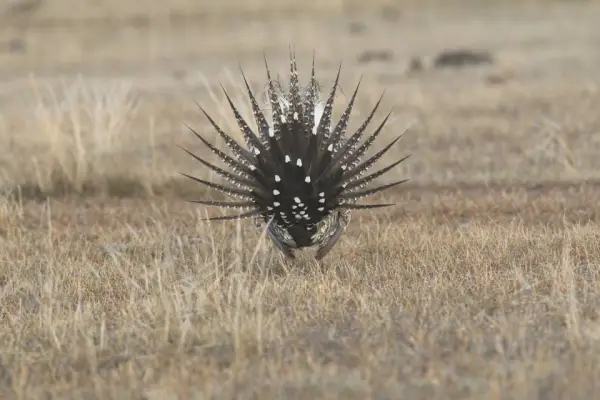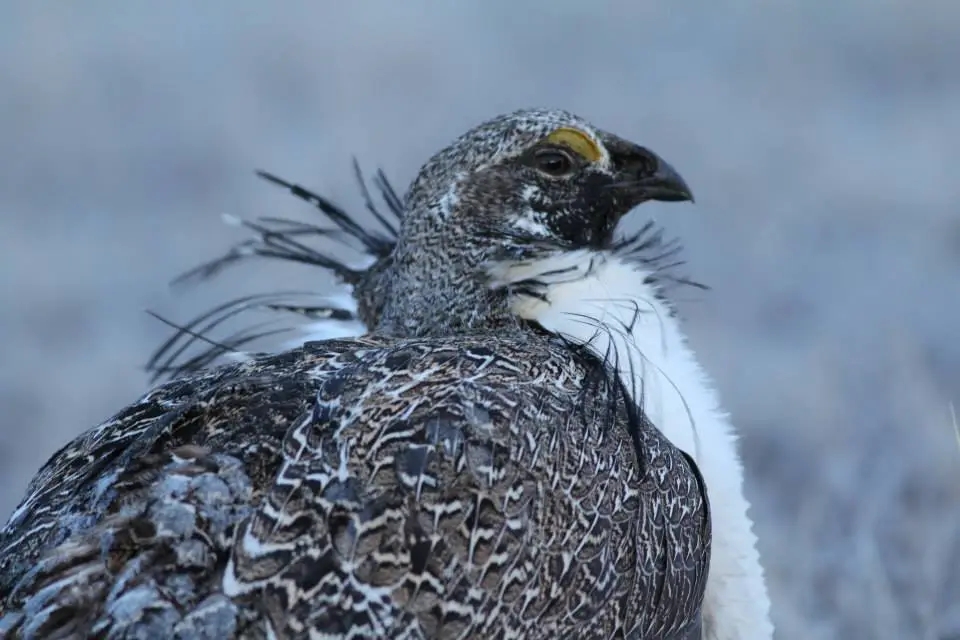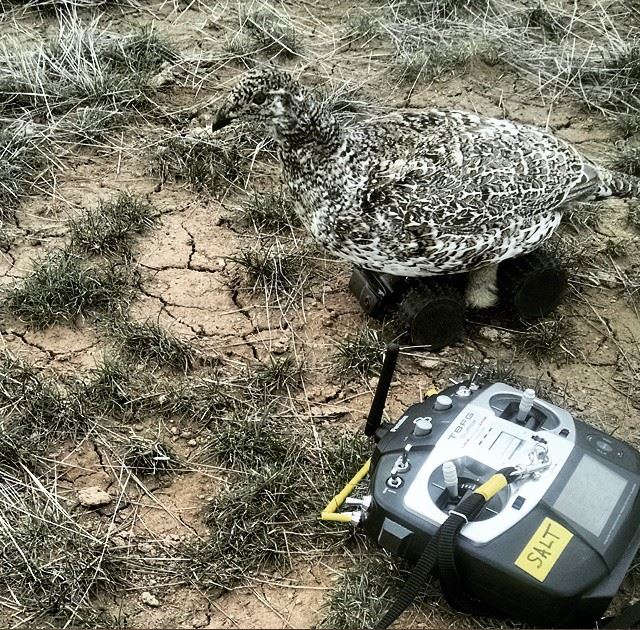This time of year, many researchers are gearing up to embark on their spring field seasons. Today, we’re featuring a throwback to this fun Field Notes about Animal Behavior alumni Ryane’s first field season in 2015!
I’ve recently returned from my first field season and as I’m settling back into Davis, I wanted to take a moment to talk about my research in Wyoming studying the mating behavior of Greater sage-grouse! Sage-grouse are basically weirdly-awesome, tricked-out prairie chickens (thus, Chicken Camp). Greater sage-grouse are currently being considered for listing under the Endangered Species act, a decision that has to be made by September of this year. They are also a lekking species, which means that during the mating season males gather together in a clumped area, dance around, and hope a female decides to mate with them. Their display is crazy and incredible and also hard to describe, so here’s a video:
Camp Life
Our camp is located just a bit from Hudson, WY, which has a womping population size of 450. Driving about 8 miles up what my phone just calls “Unknown Road,” you’ll run into our camp, which looks like this:

We live pretty well at our little camp, despite Wyoming’s weather swinging from snow to 75 degrees within 24 hours. We have running water (though we have to carry it up from towns in jugs), one flushing toilet (plus two port-a-pots, all of which are cleaned out weekly), indoor heat, and a stove and oven. Once a week we get half a day off to drive to Lander, WY to refill water, take care of trash/recycling, grocery shop, hike around, and, most importantly, stop at a local hotel for our weekly shower.
Despite the seclusion of our field camp, Wyoming is an absolutely amazingly place to work and I’d be remiss if I didn’t share some of my many, many pictures with you:















Now a bit about what we’re actually doing…
Mornings on a lek
Most of our field tech’s mornings are spent at one of two main study leks, typically in a hunting blind on a nearby hill. From here they video tape everything that happens on the lek, note male ID and positions whenever possible – we set up a grid across the lek to make this easier – and write down any copulations that occur.
By collecting all this data, we end up with a) a nearly complete video record of the entire field season and b) a record of mating success, which we can use to answer a myriad of different questions (for example, do the males that eat the best quality food have more reproductive success?) Sometimes we’ll put a blind on the lek, to do things like:
- Take pictures – to create the butt print IDs
- Sound recording – we use an array of microphones throughout the grid so we can later calibrate which noises came from which individuals. The swish, pops, and whistles of the dance are important display components
- And my personal favorite:

Robot Experiments
One of the coolest things about my lab’s research is its use of robotics to help study behavior. We currently have two robotic female grouse (fembots) that we use in experiments. By utilizing fembots, we are able to manipulate the social situation on the lek. Our fembots have two different behaviors we can use to interact with males: an interested, alert behavior and an uninterested, foraging behavior.
If you want to see a fembot in action, there are a few videos on our lab’s YouTube channel.
This year we conducted an experiment using both robots, asking how males make courtship investment decisions when there are two females near his territory showing different levels of interest. I’m now in the process of analyzing the data we collected and look forward to writing a future post about the fembots and my results!
If you want to learn more about our research with the fembots and Greater sage-grouse, you can check out this PBS Nature special or read more about our field seasons here.


